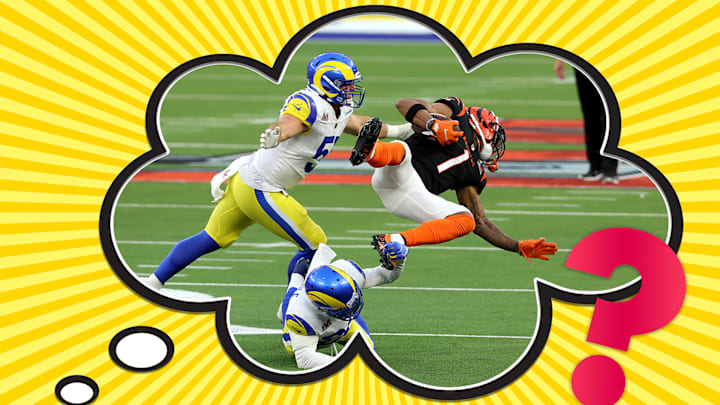Following a big win in the Super Bowl, World Series, NBA Finals, or any other major sporting event, fans want to get their hands on championship merchandise as quickly as possible. To meet this demand and cash in on the wallet-loosening “We’re #1” euphoria, manufacturers and retailers produce and stock two sets of T-shirts, hats, and other merchandise that declare each team the champ.
This Super Bowl Sunday, that means apparel for either the Kansas City Chiefs or the Philadelphia Eagles will quickly fill clothing racks and get tossed to players on the field once the game concludes. But what happens to the losing team’s clothing? It’s destined for charity.
Good360, a charitable organization based in Alexandria, Virginia, handles excess consumer merchandise and distributes it to those in need overseas. The losing team’s apparel—usually shirts, hats, and sweatshirts—will be held in inventory locations across the U.S. Following the game, Good360 will be informed of exactly how much product is available and will then determine where the goods can best be of service.
“We like to underscore that this is a solution that drives both social impact and human dignity [by] providing high quality, needed goods to those who might otherwise go without,” Shari Rudolph, Good360 chief development and chief marketing officer, told Mental Floss, “as well as a positive environmental impact [by] keeping usable goods out of landfills or from otherwise going to waste.”
In the past, the merchandise has been plentiful. Based on strong sales after the Chicago Bears’s 2007 NFC Championship win, for example, Sports Authority printed more than 15,000 shirts proclaiming a Bears Super Bowl victory well before the game even started. And then the Colts beat the Bears, 29-17.

Good360 took over the NFL’s excess goods distribution in 2015. For almost two decades prior, an international humanitarian aid group called World Vision collected the unwanted items for MLB and NFL runners-up at its distribution center in Pittsburgh, then shipped them overseas to people living in disaster areas and impoverished nations. After losing Super Bowl XLIII in 2009, Arizona Cardinals gear was sent to children and families in El Salvador. In 2010, after the New Orleans Saints defeated Indianapolis, the Colts gear printed up for Super Bowl XLIV was sent to earthquake-ravaged Haiti.

In 2011, after Pittsburgh lost to the Green Bay Packers, the Steelers Super Bowl apparel went to Zambia, Armenia, Nicaragua, and Romania.

Fans of the Super Bowl team that comes up short can take heart: At least the spoils of losing will go to a worthy cause.

An earlier version of this story appeared in 2009; it has been updated for 2023. Additional reporting by Jake Rossen.
